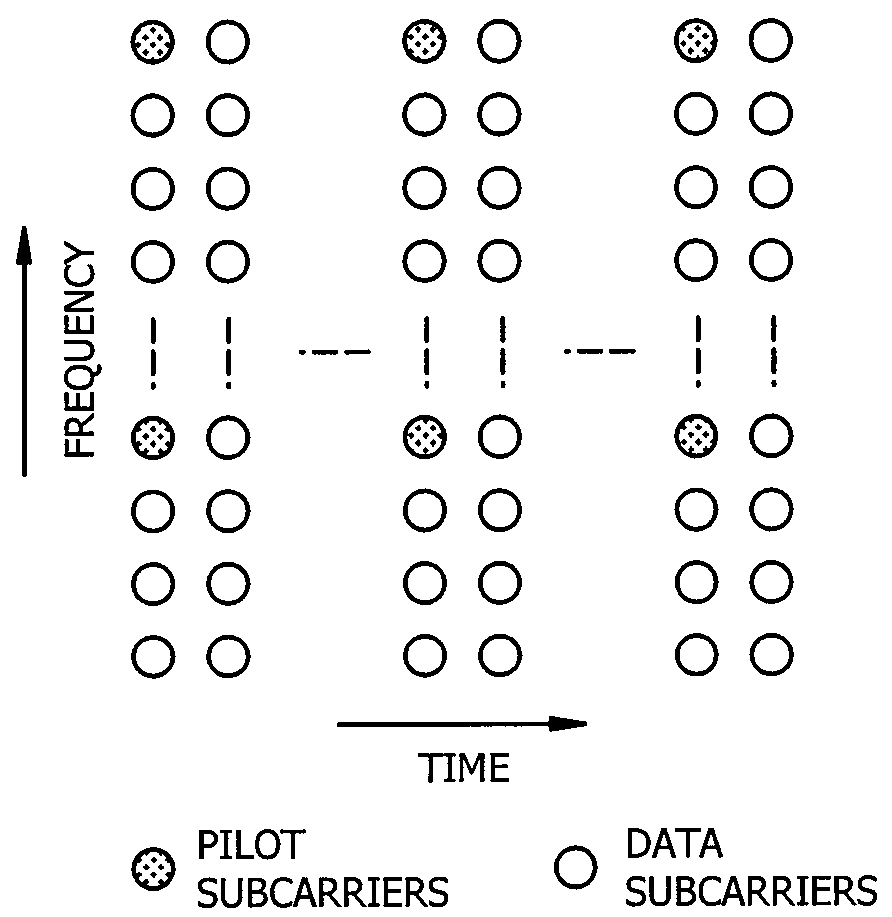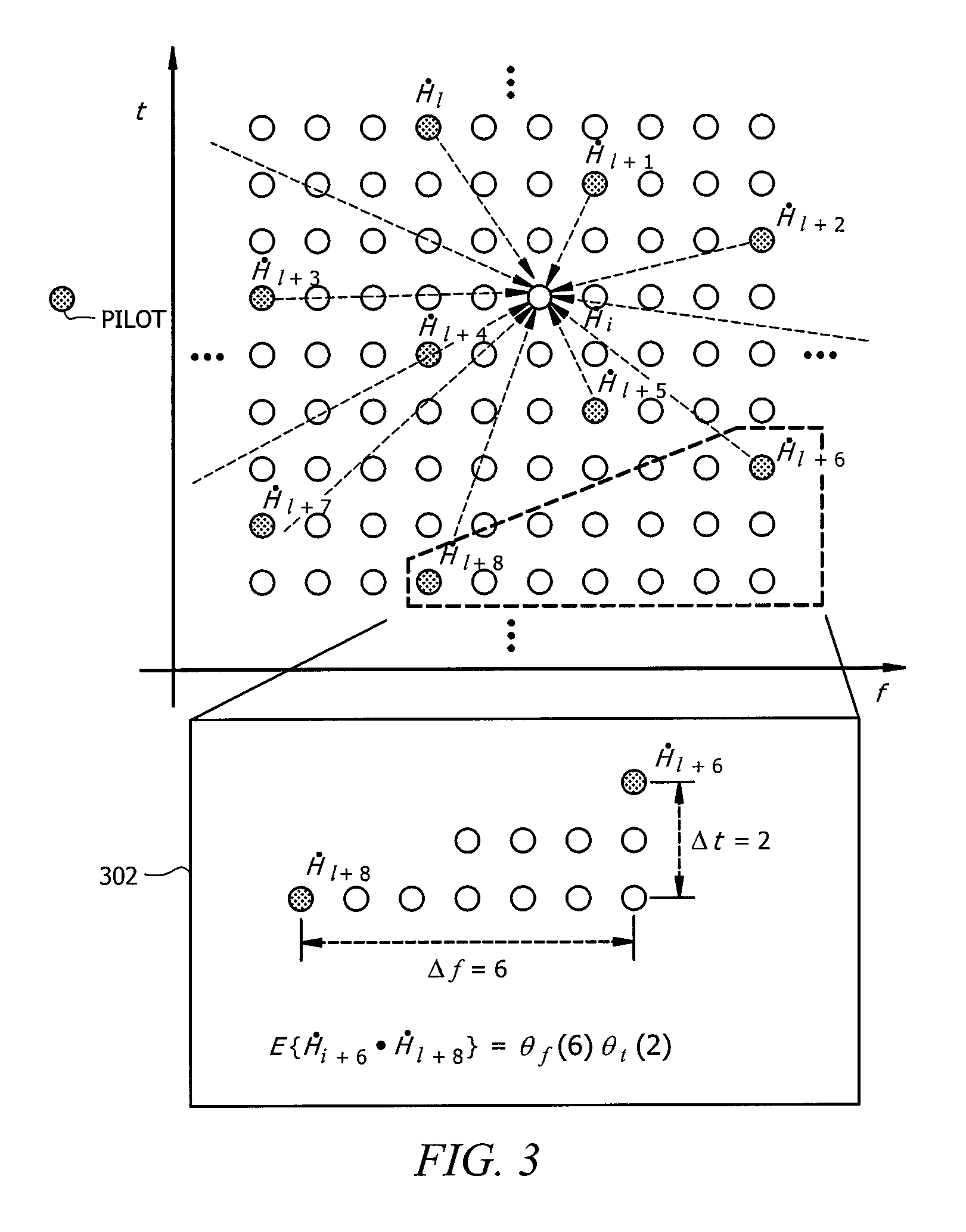Channel Estimation Techniques for OFDM
a channel estimation and channel estimation technology, applied in orthogonal multiplexing, multiplex communication, baseband system details, etc., can solve the problems of moderate to high complexity and performance of transform domain methods, moderate complexity and high performance, and truly two-dimensional, so as to achieve large buffer requirements and delay effect large
- Summary
- Abstract
- Description
- Claims
- Application Information
AI Technical Summary
Benefits of technology
Problems solved by technology
Method used
Image
Examples
Embodiment Construction
[0029]FIG. 2 is an illustration of exemplary system 200 adapted according to one embodiment of the invention. System 200 includes OFDM receiver 201, which in this embodiment is part of digital television receiver 202. OFDM receiver 201 is not limited to use in television receivers, as other uses are also possible, such as within handheld devices (e.g., cellular phones, Personal Digital Assistants, laptop / desktop computers, and the like).
[0030]OFDM receiver 201 receives a signal that includes subcarriers spread across the time and frequency domains. Channel estimator 210 processes the signal and produces channel frequency response estimates therefrom, as described in more detail below. Demodulator 220 uses the channel frequency responses to perform coherent demodulation of the data tones. Demodulator 220 utilizes the received frequency data tones and the frequency channel response to recover the transmitted data symbols (for example, BPSK, QPSK, QAM symbols). The recovered data symbo...
PUM
 Login to View More
Login to View More Abstract
Description
Claims
Application Information
 Login to View More
Login to View More - R&D
- Intellectual Property
- Life Sciences
- Materials
- Tech Scout
- Unparalleled Data Quality
- Higher Quality Content
- 60% Fewer Hallucinations
Browse by: Latest US Patents, China's latest patents, Technical Efficacy Thesaurus, Application Domain, Technology Topic, Popular Technical Reports.
© 2025 PatSnap. All rights reserved.Legal|Privacy policy|Modern Slavery Act Transparency Statement|Sitemap|About US| Contact US: help@patsnap.com



